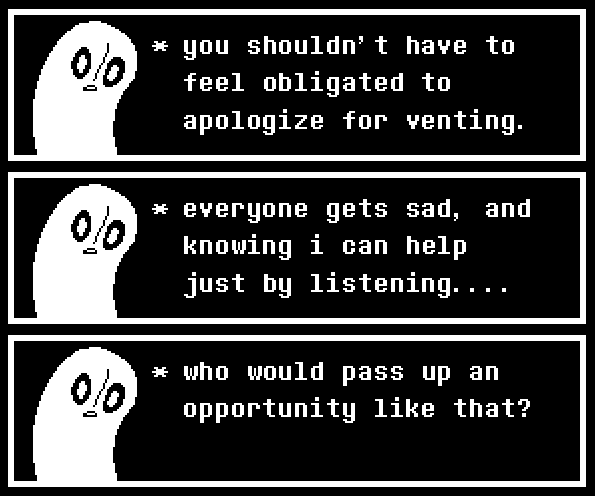Chapter Two: The Great Unclenching
I learned that bureaucracy is scared to change direction, even if it’s currently obviously going in a bad direction.
Turn the Wheel
Bureaucratic inefficiencies rely on our inability to slow down. Engaging in thought exercises like Chesterton’s Fence and abstraction laddering can seem like a luxury many governmental projects cannot afford. After all - many of the mission-critical governmental services do things like feed families, provide healthcare for the poor, and provide access to education. These systems do not get to rest - their operations, processes, and people need to function well and simultaneously to ensure real humans are cared for at the end of the day.
A former colleague and friend, Grace Kretschmer Tran, once gave me a very humbling perspective—one I sorely needed at the time:
Sometimes doing this job feels like you’re in the car during the world’s slowest car crash. We’re about to crash into a tree. We should turn the wheel.
But the person driving doesn’t turn the wheel. Instead, you’re watching this, strapped in the backseat, and screaming, ‘Why don’t we just turn the wheel?!’
There would be many times I would not be able to prevent us from crashing. I learned that bureaucracy is scared to change direction, even if it’s currently obviously going in a bad direction. It is not because there is glorification of a broken thing - it is because change is very scary. It includes a lot of unknowns that bureaucratic leaders do not want to accept. The risk of trying something new feels too large. Many people would not want to be put in the position of choosing to slow down or help someone put food on their table. Public servants make impossibly hard decisions under terrible circumstances that impact everyday people.
I learned my role isn’t to throw my body to prevent the crash - many times simply stopping the car wasn’t possible - but instead to figure out how to help people pull the wheel and de-risk to less bad outcomes and begin to turn the wheel. I just needed to provide them enough reassurance that relaxing their grip would be the first step to steering away from disaster.
Move As A Blob
“Embracing the Blob” is an extremely non-scientific, evidence-less technique that has brought me much success in participating in digital service teams across agencies and projects.
There are no heroes in this work. It takes a team. This is one of the most fundamental and oft-neglected practices that is necessary to fix the bureaucracy. I have seen a lot of people believe that they, and their genius of course, are the salvation that will finally, finally fix decades-old issues with a government. Thank goodness! I am glad you finally arrived. So nice of you to show up.
I like to give you simple advice to remember as you grow as a civic technologist: It is dangerous to go alone. Find a team. Build a team. Learn about and with one another. The only way to make it out to the other side is together and the only way to do that is to learn how to communicate and create trust.
Grind for Trust
It is very fun to watch people come into public service from other more well-fed organizations and watch all of their credentials and previous achievements fail them when facing the bureaucracy. The only victories that matter to the bureaucracy are the ones that can be won under the same circumstances. These circumstances should include a combination of one or all of the following: not enough money, not enough time, not enough resources, not enough direction, too much direction, not enough policy, too much policy, not enough technology, too much technology, and/or a due date that perpetually oscillates between “yesterday” and “never”.
Most career bureaucrats have seen shiny new efforts to “change the way things are” come and go. They know how to withstand the dumbness of eager new administrations. The currency of a system built on skepticism is trust. In order to develop trust in this environment, you must roll up your sleeves and do the work. Yep - it means the meetings, follow-up-meetings, follow-up-to-the-follow-up meetings, and facing the dreaded rescheduled-meeting-from-months-ago-whose-purpose-is-unknown.
In order to make change and to make change stick - you must stick. You must show that the practices, the new ways of thinking about how software is designed and delivered can stick. It can stick in the same circumstances any bureaucrat finds themselves in. It can come back and try to stick again if it fails. What you show each time you stick, or try to stick, is that change is possible. It is in that wiggle room in which the seeds of hope can grow.
Pressure Drop
Let me give you an insight that I hope helps reframe how you look at red tape: Bureaucracy is a type of institutional compensatory behavior. Compensatory behavior is behavior taken in an attempt to correct or “make up for'' a perceived failure, deficiency, or mistake. Bureaucracy exists because understanding, appealing to, and communicating with other humans are hard.
This can be doubly hard when you are faced with the same pressures as a bureaucrat serving the public. The public can be cruel. It can judge harshly, unrepentantly, and often without any sympathy to the restricting conditions of delivering a public benefit.
We are not here to judge as civic technologists. Governmental systems have been trying to support the collective care of the public for decades. In this, we must recognize that there may be circumstances where previous implementations of a service were not ideal. It is not our place to place judgment on how a service came to be, instead our focus is on how to improve these services to the best of our ability.




